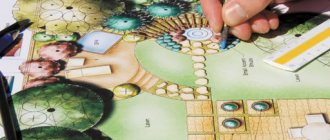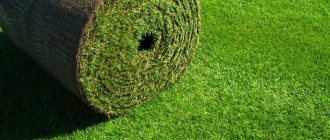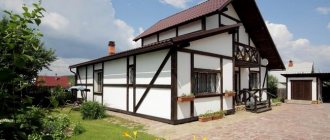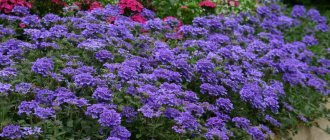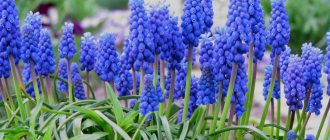Many people come to the dacha to work and relax. And in order to work and relax conveniently, comfortably and beautifully, you should take care not only of the appearance of the country house, but also make the area around it cozy.
When arranging a summer cottage, you need to divide it into zones in advance on the diagram: arrange a vegetable garden with neat beds, plant a garden, lay convenient paths, build a flower garden, dig a small pond - do everything that your imagination is capable of and that you have enough money for. In this case, it is not at all necessary to contact professional designers. Nowadays you can find many ideas for inspiration on the Internet or specialized magazines.
The main condition that must be observed if you decide to arrange your site yourself is a single style. In order for everything to look harmonious, both the house, the vegetable garden, and the relaxation area must be made in the same design style. There are several different styles in landscape design, with their own rules and laws.
Garden plot styles
All images of landscape designs can be divided into two large groups: classic and modern.
Prominent representatives of the first category are regular and irregular styles, as well as all country trends.
The second category includes modern, high-tech, minimalism.
Landscape design of a house on 10 acres
A visual diagram of the landscape design of a country house of 10 acres displays the location of current objects and those that are planned to be installed.
Scheme with corners of cultivated land for planting or setting up flower beds.
There is a gazebo in the center, a swimming pool and other elements connected by paths.
If there is enough space, you can recreate a mini version of a river with banks and a bridge, a cozy garden, install a gazebo and a swimming pool.
English style
English style is a slight negligence and traditional grooming. This is vertical gardening with ivy and roses, neat lawns that create the impression of fundamental antiquity, small ponds and winding paths decorated with flower borders.
A riot of colors is not welcome here; much more attention is paid to foliage and grass. Among the most popular plants are hostas and ferns, foxgloves and delphiniums, phlox and ornamental onions, begonias and lobelias. A pond will look great surrounded by cattails, sedges, and irises.
Preferred colors will be silver, white, lilac, crimson shades
Provencal
French provincial style breathes romance and antiquity. The heaviness of stone columns and cracked retaining walls is surprisingly combined with the grace of pergolas and trellises entwined with wild grapes. All colors are muted, garden furniture is covered with patina, a stream babbles somewhere, and the intoxicating aromas of olive and herbs are in the air.
Decorating a plot in the Provençal style is a difficult task: the necessary plants do not live in our latitudes, and it is even more difficult to recreate the architectural background. But it will be easy to keep an eye on such an estate, because there is some abandonment in its spirit.
French style
It is also often called regular, classic or formal style.
A striking representative of this design can be considered the design of gardens in Peterhof, Versailles, and the Tuileries. This stylish site design is characterized by perfect geometric order. All plants are planted in strictly defined places. And the color scheme is of great importance.
Almost all flower beds are monochrome. In this design, Nature is completely subordinate to Man, and deviations are not recognized.
Maintaining the area will take a lot of time and effort. Moreover, French design can only be created on a large area, where you can make straight alleys, symmetrical flower beds, a rectangular lawn, green rooms framed by perfectly trimmed bushes.
Among plants, preference is given to phlox, pelargonium, gypsophila, verbena, roses of all kinds, lilies, and tulips. Living hedges are created from privet, mock orange, and honeysuckle. Cypresses and thujas will emphasize the geometric design.
The most advantageous shades of the French style are white, blue, and light yellow.
Classic
The timeless classic style is the exact opposite of the landscape style. Clear lines, strict geometric shapes - these are all things that make classics easily recognizable.
If there are a lot of plantings on the territory, then you need to ensure they are regularly cut and trimmed.
Trees and shrubs should not lose their shape. Other elements of the site should be made in a simple style, but not devoid of richness.
Dutch style
This style of garden plot is very reminiscent of the light paintings of the artists of the Dutch school of the 17th-18th centuries. The characteristic features are considered to be a seasoned, exemplary appearance combined with a pastoral overall picture.
The main attention should be drawn to the lawn with elegantly laid out flower beds, live, carefully trimmed hedges, borders and mixborders, and small shrubs.
This style is best conveyed by bulbous plants: daffodils, tulips, lilies, crocuses, hyacinths, as well as small thickets of delphinium and foxgloves.
Dogwood, juniper, and boxwood are used as shrubs.
The main color is green with elegant splashes of white, blue, purple, and scarlet flowers.
Garden design styles: selection of decorative elements for the garden
Landscape design of a garden plot involves the presence of small details that attract the eye. These details are decorative figurines, unusual, beautiful outdoor flowerpots. Having a little skill in modeling with clay, you can make exclusive garden decor with your own hands. Wicker items made from wicker also look good. Handmade products will fill the space with the energy of love and care of the owners, and give it individuality.
When improving the territory, you should remember that the design of the garden near the house should be moderate. An excess of everything beautiful immediately looks crumpled and loses its appearance. The space should not be overloaded; it should provide an opportunity to rest a person’s gaze and thoughts.
We hope that our article on how to improve your garden plot has become a drop of inspiration that motivates you to new achievements. The main thing is not to be afraid to experiment, to realize your fantasies and everything will definitely work out.
Provence style
A plot in the Provence style is always sweet and romantic. It miraculously combines rustic roughness and the elegance of high society salons, the soulfulness of colors and a refined touch of antiquity.
There will definitely be a place for fragrant herbs, pergolas and trellises entwined with vines, and fruit trees. It is advisable to find a place for a small fountain or pond, decorated with pots of flowers.There should be a lot of flowering plants, and the main difficulty will be to choose flowers so that they delight the owners with bright colors all season long or gradually replace each other. The most commonly chosen plants are cosmos, delphinium, lupine, lavatera, foxglove, sage, hydrangea, and lavender.
The main tones will be light green shades with spots of white, pink, blue and lavender.
Basic principles and objectives of landscape design
Landscape design of the yard includes 3 areas - architecture, design and construction. The finished project must correspond to the character of the home owners, their priorities and principles:
- simplicity - all elements used should be perceived simply;
- convenience - every object, plant or decoration should have a practical value - create an atmosphere, perform a functional role or inspire;
- beauty - a harmonious combination of details creates a complete picture with its own atmosphere;
- plants - plant only species that are compatible with each other;
- A smooth transition is important, from low objects in front to high objects in the back.
The main thing is to create a single composition where the elements will complement each other like puzzles. Match the color, size and position with the others. 3 rules will help you in your work:
- Do not use massive structures.
- Hide fences from view.
- Choose small trees. Ornamental shrubs and small plants are better suited.
Owners decide for themselves how to use the recommendations, because each project is individual. For example, you want to build a fence for security and its appearance does not bother your household. Or make the central object a tall oak tree that already exists in the yard.
Important! Arranging a local area requires knowledge of engineering, biology, basic design and computer technology. To create a beautiful, practical and functional composition that will last for years to come.
Country style
This style is distinguished by simplicity and slight chaos. It should bring a smile with its colorful colors and unique plantings.
The basis of the design is formed by beds and fruit trees, between which flowers are scattered, which most often are not even arranged in flower beds.
You should not try to create such a design with the help of expensive and capricious plants; sunflowers, daisies, marigolds, cosmos, hollyhocks, asters, and sweet peas will look much better.
For greenery, preference is given to herbs, hostas, and ferns.
Scandinavian direction
If you are a romantic person who loves fairy tales and legends, then the Scandinavian style is what you need. It means:
- abundance of natural stone;
- the presence of wooden elements;
- abundance of plants and flowers.
How to make drainage on a site - the secrets of a master on how to make drainage to drain water yourself!- How to clean a pond: a detailed description of how to clean a pond quickly and easily with your own hands (130 photos + video)
- Decorate the site according to Feng Shui: location features, design elements, Feng Shui zones. How to work with a ba gua diagram? Secrets of garden decoration
Decorative details can include a stone oven, alpine slides, stream, steps, artificially created grotto, etc.
Chinese style
Chinese style decoration is based on the teachings of Feng Shui. The basis of this design will be the absence of symmetrical placement of objects, parallel lines and angles. But the presence of a small pond and a tea gazebo in the depths of the garden is mandatory.
The overall style should convey a sense of limitlessness and richness.
All plants are designed to heal the body and soul; each representative of the flora has a certain symbolism. Iris, dahlia, peony, jasmine, and chrysanthemums will look great here.
The colors chosen are soft and pleasing to the eye.
Japanese garden on the site
Japanese style is almost similar to Chinese. Only special attention should be paid to stones that will create a unique appearance. In addition, there must be a pond and an arched bridge over it.
Bright colors and severity
Keep in mind that in the Japanese style everything should be meaningful: why this or that element is located here and not there.
For example, a lot of boulders under the gazebo indicate that the gazebo itself is located on a hill where you can reflect on life.
Is it worth creating?
Remember that the Japanese style requires a lot of effort and time not only for laying stones, but also for maintenance. The Russian climate with snowy winters can destroy all the craftsmanship, so when summer comes, it will either have to be restored or reconstructed.
Russian estate
The design is very reminiscent of ancient noble territories. It is characterized by streamlined shapes of all objects, lawns with simple flowers, spreading trees, and raised flower beds.
The presence of at least several coniferous trees and the simplest meadow flowers (clover, dandelions, daisies) is required.
Flower beds are decorated with peonies, irises, hollyhocks, asters, daylilies, lilies, geraniums, and phlox.
Shrubs are represented by roses, rosehips, barberries, and lilacs.
The color scheme is dim and calm. The main tone is set by white, cream, soft blue, and pink shades.
Colonial style
Characterized by the use of simple materials, freedom and light absent-mindedness, and bright colors.
The presence of green hedges made of ivy or hops, many vases, tubs and flowerpots filled with elegant plants is required.
Plants chosen include bulbous flowers, ornamental tobacco, cloves, and hydrangea.
A small area is given over to medicinal herbs and useful shrubs.
Of the trees, most of them are represented by fruit plantations.
Japanese style
This design is more suitable for thinking people who prefer solitude. It is not intended for noisy fun.
There are no random components here; each flower or stone carries a certain meaning and is located in a precisely calibrated place.
Mosses, bamboo, hosta, rhubarb, ferns, sedge, cereals, chrysanthemums, and irises are perfect for decorating such an area.
Larger plants are represented by pine, maple, cherry, and quince.
Plants that change the color of their leaves with the change of season, like wild grapes or lemongrass, will look great.
The main tone is set by grayish-green, brown, white, and crimson shades.
Italian design
This is an ideal choice if the dacha is located on the territory of a cottage community.
The specificity of the style is the combination of green spaces and architecture. It involves the use of such small architectural forms as fountains, gazebos, stairs, statues.
The area must be kept clean and tidy. All objects must be built exclusively from natural stone.Alpine style
This style is designed to imitate a piece of a mountain landscape. For decoration, a variety of stones are used, next to which grow wormwood, lupins, hostas, cereals, bells, violets, asters, and violas.
Among the trees, junipers, thujas, and spruces will perfectly decorate the landscape.The main color becomes a gray tone, it is perfectly complemented by white, purple, scarlet, and yellow colors.
Minimalism
The most laconic style. It is characterized by extreme simplicity, which, however, is quite difficult to create.
Arborvitae, spruce, and plane trees are used as a green background, diluted with a small number of flowering plants.
There can be no more than three cultures. Usually these are zinnias, asters, and chrysanthemums.
The picture can be supplemented with sedge, fern, and moss.
The main tone is set by gray, white, beige, silver colors.
Modern
This style is designed to delight with its luxury and elegance. The flora is represented by picturesque groups, in the center of each of which there is something completely unusual: bright berries, an unusual bush, a strange tree.
The juxtaposition of tall trees and small shrubs will also become unusual.
Irises, nasturtiums, daffodils, lilies, poppies, gladioli, and ferns are designed to add pretentiousness to the design.
The most suitable colors will be shades of beige, chocolate, and silver tones.
Mauritanian
Such a garden is a long-awaited oasis among the endless desert, the embodiment of luxury and bliss, an abode of rich colors, wondrous sounds and exotic aromas. It is isolated and hidden behind high walls, there is a swimming pool decorated with colorful mosaics, quinces, figs and peaches grow all around, and birds chirp on the branches. You can admire this beauty and absorb it while sitting on a low lounger.
The landscape in the Moorish style is formed according to the chor-bak principle, that is, “four squares” - this is the ancient heritage of Arab culture.
High tech
This style is characterized by clear and straight lines and corners, zigzag or absolutely straight alleys, and a perfectly smooth lawn.
There is no place for bright flower beds here; it is much better to use ferns, hostas, and succulents. The hedge is formed from juniper, spruce, and boxwood bushes.
The main color range is represented by gray, chocolate, silver, blue shades interspersed with spots of black or red.
Buildings at the dacha
Landscape design at the dacha begins with an assessment of the existing arrangement and outline of the plan. The first step is to determine the exact size and presence, as well as the location of the buildings.
The main detail of any garden is the house. The ideal place to place it is close to the entrance and parking lot so you don't have to carry heavy bags to and from your car across the lot.
Important! If you bought a garden without a house, build it in the same corner as most of your neighbors - this will simplify the choice of location and allow you to locate the living space away from prying eyes.
It is logical to place a garage or open parking right at the entrance, so that you do not have to drive your car through the entire territory.
Outbuildings (for example, a shed with garden tools and a wood shed), on the contrary, are hidden in the depths of the garden plot. Or they are placed in another convenient place, improved with the help of hedges, decorative trellises and other methods of vertical gardening.
Important! The utility block should not create a shadow on your dacha; the favorable side is north or north-west.
The photo shows a country house and neatly stacked firewood
The recreation area includes various attributes, depending on the composition of the family and your personal preferences:
- gazebo, pergola or terrace;
- summer cuisine;
- pool or decorative pond;
- bath or sauna;
- children's or sports ground.
In landscape design, there are two accepted placement scenarios: in the backyard immediately behind the house, or in the depths of a summer cottage, hidden from prying eyes.
A couple of tips
Creating a landscape design is a painstaking task and requires attention to detail. And maintaining the created style will require quite a lot of time.
Landscape design of a modern summer cottage
It will help to effectively use the local area by dividing it into functional zones. And create a cozy atmosphere where you will want to spend a lot of time. Design – you can tackle the project yourself or hire a professional who will create a 3D model, guided by the client’s wishes and the geographical features of the provided object.
Photos of plots
Total
Category: Landscape elements
